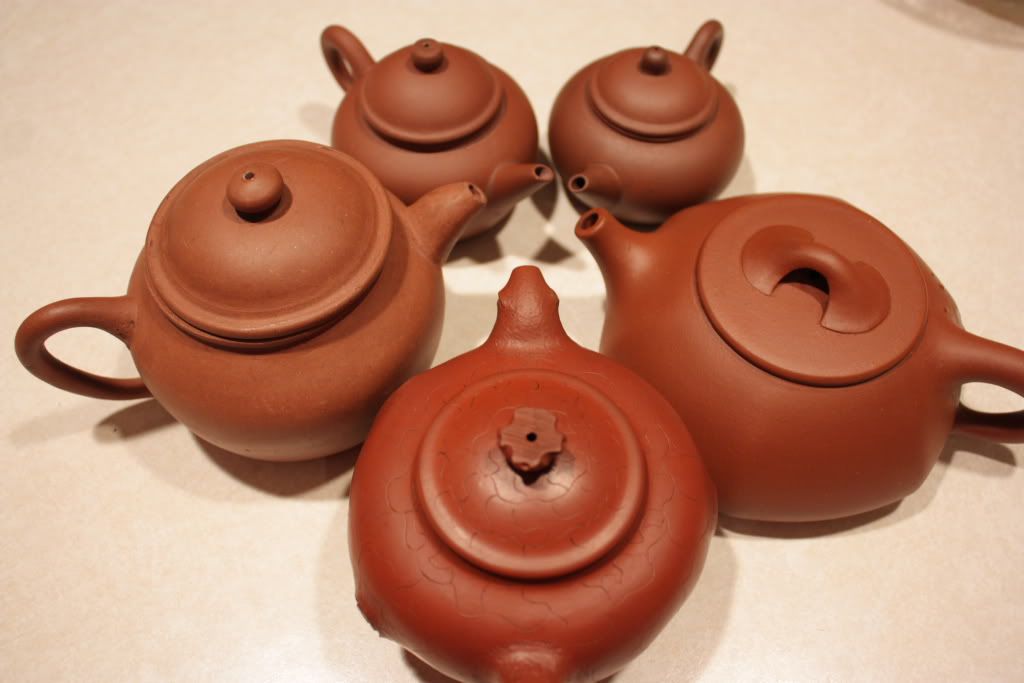
Which one does not belong to this group, and why?


Which one does not belong to this group, and why?
Categories: Objects · Old Xanga posts
Tagged: teaware, yixing
administration aged oolong aged puerh black tea books chaozhou chawan Chinese oolong cooked puerh cups Curated Samples dancong friends gaiwan grandpa green tea health heicha history Indian oolong Japanese tea Korea musing musings retaste project shopping silver skills storage Taiwan oolong Taobao teabags teaware tests tetsubin tieguanyin tokoname traditional stored puerh travel water white tea wuyi yancha yixing Yixing Inventory young puerh
I took you at your suggestion and have been reading some of your old post-Covid posts. I haven’t been to…
Interesting.... would 250C in my oven work?
Hi! I've had the similar issue with one of the older pots I have - that nusty sticky stuff made…
May I ask why Jingmai has 'completely fallen out of favor'? I have just started watching videos from FarmerLeaf and…
I agree with Jakub about Brita-filtered tap water, I´ve tried many bottled variants and none was as good as my…
Get a free blog at WordPress.com. Theme: Cutline.
8 responses so far ↓
trentk // March 27, 2009 at 12:56 am |
In terms of color, to say the one on the bottom b/c of the unusually orange clay. In terms of “burnishing” (if that’s the right term), I’ll have to say the one on the left b/c it appears to be the most porous/dull and least smooth. I terms of ornamentation, the one on the bottom b/c it’s of a less “classical” design than the others.
Anonymous // March 27, 2009 at 6:32 am |
It seems there are different ways to sort the pots, and for each criteria, there is a pot which is different of the other.
1. The provenance: just by looking at the earth used, the one on the left (the one you presented last week) do hardly look like the Yixing pot I’ve seen before.
2. The age: Both in the back seems to have less patina than the others, but the photo do not permit better assumptions (the left one seems to have less patina, but not sure). About the finish of the Shi Piao, the cuts of the hold of the lid are more precisely cut, what is more common for newer pots, but it has many more patina (more used?). And the front one has so much patina that it could be a (very) old one…
3. The front one is a pot from an artist, the other are very classical shapes with not so good finish (as far as I can see on the picture) and could be mass production.
Is one of these assumptions good?
Anonymous // March 27, 2009 at 11:21 am |
9 o’clock terracotta pot just does not seem right to me, and that lid would drive me nuts.
I don’t usually like gong chun pots, but that bottom one keeps drawing my eye in a good way.
Anonymous // March 27, 2009 at 1:57 pm |
Far right. Lid is a different style than the others.
Anonymous // March 27, 2009 at 3:01 pm |
The top left, because you drink sheng pu-erh from it, while others are used for oolongs.
Anonymous // March 27, 2009 at 3:16 pm |
From a functional stand point, the shi piao one can’t stop pour by blocking the hole.
But really, that one a 9’oclock probably can’t either since the lid fit seems terrible.
Anonymous // March 27, 2009 at 10:18 pm |
By the look of the clay texture, I’d say the one on the left, at about 9:00, is terra cotta rather than hong ni; it does not seem to have the requisite grit, and also the color is wrong.
MANDARINstea // March 27, 2009 at 10:59 pm |
Bottom one is not a Yixing…. my wild guess, a Japanese perhaps? Hey, what’s the Prize? : P